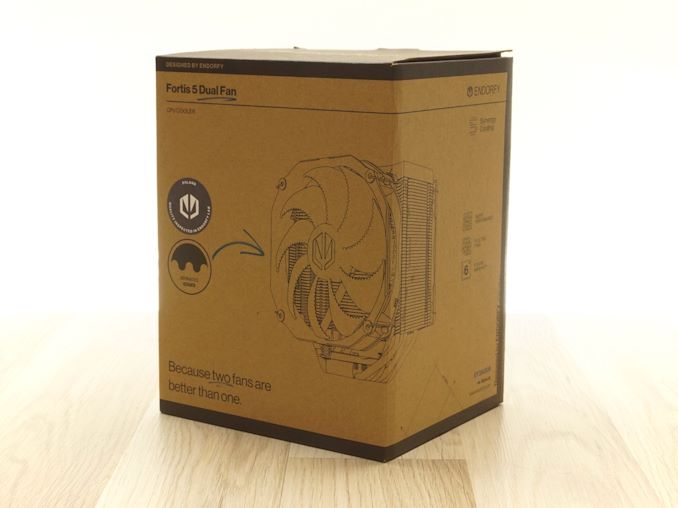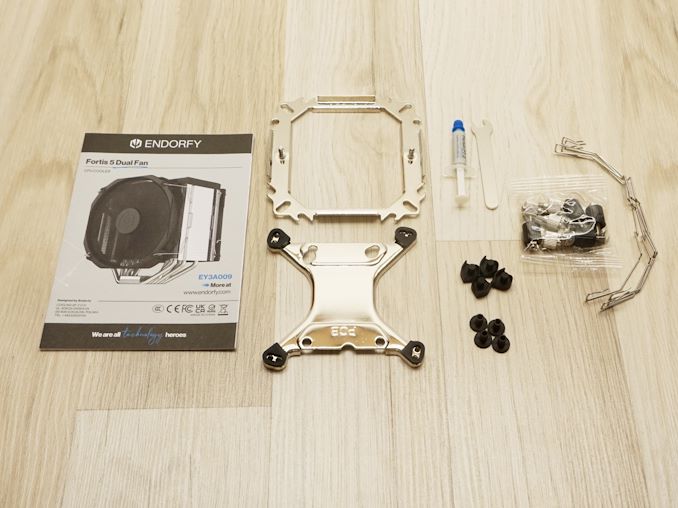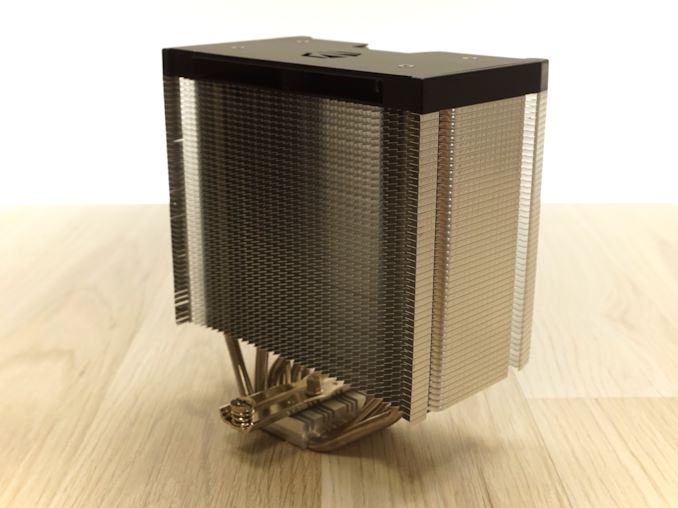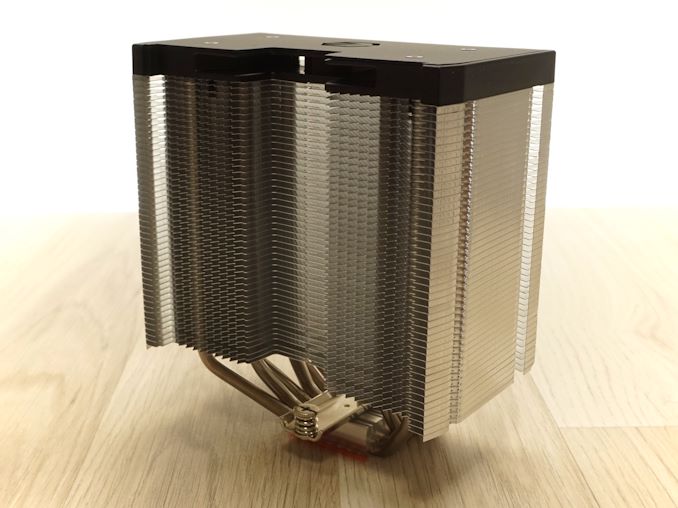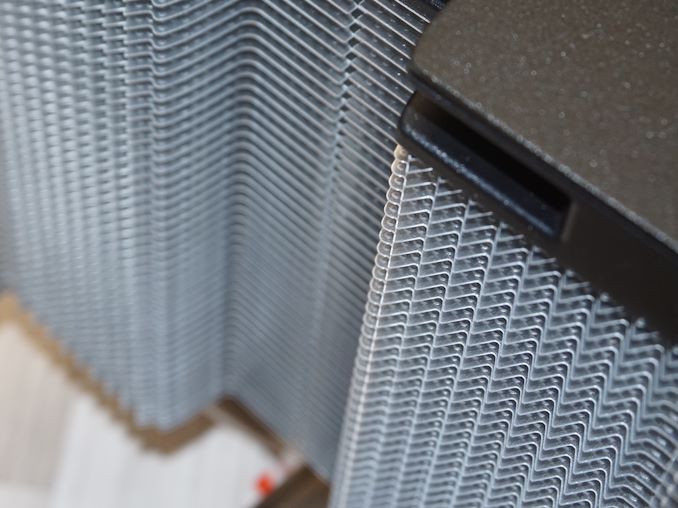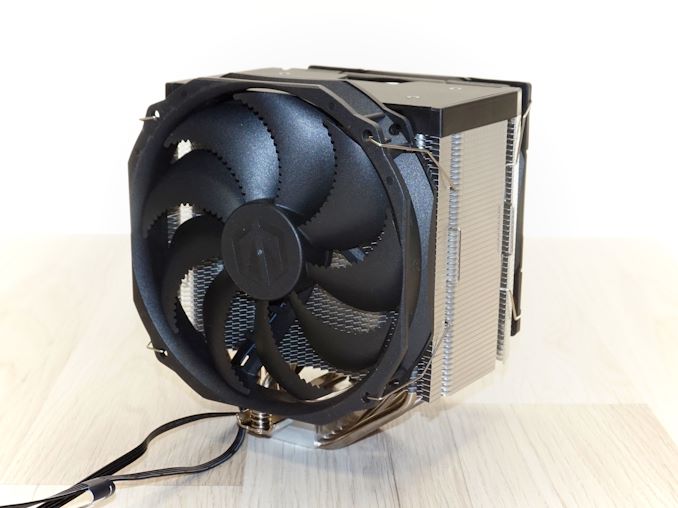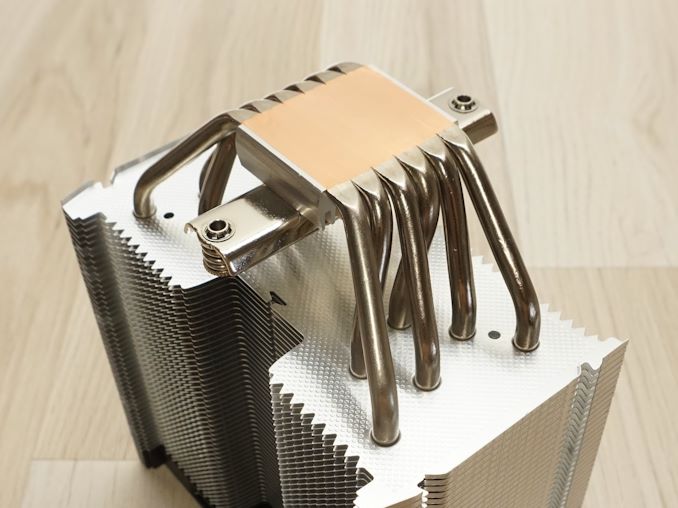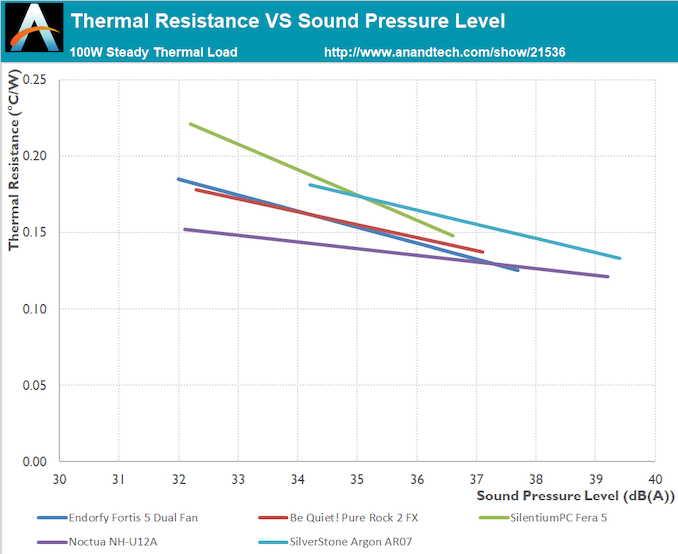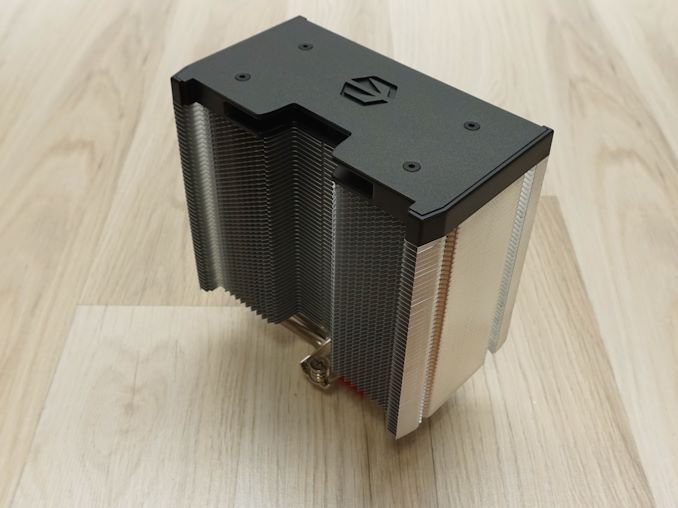Standard CPU coolers, while adequate for managing basic thermal loads, often fall short in terms of noise reduction and superior cooling efficiency. This limitation drives advanced users and system builders to seek aftermarket solutions tailored to their specific needs. The high-end aftermarket cooler market is highly competitive, with manufacturers striving to offer products with exceptional performance.
Endorfy, previously known as SilentiumPC, is a Polish manufacturer that has undergone a significant transformation to expand its presence in global markets. The brand is known for delivering high-performance cooling solutions with a strong focus on balancing efficiency and affordability. By rebranding as Endorfy, the company aims to enter premium market segments while continuing to offer reliable, high-quality cooling products.
SilentiumPC became very popular in the value/mainstream segments of the PC market with their products, the spearhead of which probably was the Fera 5 cooler that we reviewed a little over two years ago and had a remarkable value for money. Today’s review places Endorfy’s largest CPU cooler, the Fortis 5 Dual Fan, on our laboratory test bench. The Fortis 5 is the largest CPU air cooler the company currently offers and is significantly more expensive than the Fera 5, yet it still is a single-tower cooler that strives to strike a balance between value, compatibility, and performance.
| Endorfy Fortis 5 Dual Fan CPU Cooler Specifications |
|||
| Type | Air Cooler (Single Tower) | ||
| Dimensions | 159 x 144 x 131 mm (H x W x D) 760 gr |
||
| Fans | 1 x 140 mm Fluctus FDB Fan
1 x 120 mm Fluctus FDB Fan |
||
| RGB | No | ||
| Supported Sockets | Intel: LGA20xx, LGA1700, LGA1200, LGA115x
AMD: AM5 / AM4 |
||
| Warranty | 6 Years | ||
| Price | $49 | ||
We received the Fortis 5 Dual Fan in a brown cardboard box with schematics and text printed on it. There is a lot of information concerning the cooler printed on all sides of the box, as well as a few marketing catch phrases. Additional cardboard and foam packaging protect the cooler inside the box.
Unboxing the cooler reveals the essential mounting hardware and clear instructions, without unnecessary parts included. The only item worth mentioning is the syringe of premium Pactum PT-3 thermal paste, with enough amount for at least three applications. The provided mounting hardware supports a broad spectrum of CPU sockets, rendering the Fortis 5 Dual Fan compatible with several Intel (20xx / 1700 / 1200 / 115x) and AMD (AM5 / AM4) processors.
The Fortis 5 Dual Fan cooler is structured around a substantial single-tower design, measuring 159 mm in height. This dimension ensures compatibility with a wide range of PC cases, from mid-tower to larger ATX designs, without risking clearance issues that are common with taller coolers. The cooler weighs approximately 800 grams, striking a balance between effective cooling and manageable weight. This design choice is particularly important for users concerned about motherboard stress or who frequently transport their systems.
At the core of the Fortis 5’s cooling efficiency are its six high-performance copper heat pipes. These heat pipes are designed to efficiently transfer heat away from the CPU, distributing it evenly across the cooler’s large aluminum fin array. The heat pipes are arranged in a way that maximizes the contact area with the fin stack, which should enhance thermal dissipation while maintaining a relatively compact form factor. The fins are serrated, a method used to reduce air turbulence and noise. A plastic cover shields the top of the fin array, mostly to improve the design’s aesthetics. While it does not feature RGB lighting, a common trend among modern coolers, its clean design appeals to users who prefer a more understated look. It is important to mention that the quality of the build is exceptional, meaning there are no flimsy fins or sharp edges anywhere around the cooler.
One of the defining features of the Fortis 5 Dual Fan cooler is its asymmetric dual-fan setup, which includes two Endorfy Fluctus PWM fans (140 mm and 120 mm). These fans are optimized for static pressure, a crucial factor when pushing air through dense fin arrays. Both fans have a range from 250 to 1400 RPM. The unique serrated blade design of the Fluctus fans is supposed to minimize turbulence and vibration, reducing noise output.
The base of the Fortis 5 is relatively simple, with most of the body made out of aluminum and a steel brace mounted at its top. The body provides the mechanical strength needed to hold the copper heatpipes together, which are formed to come into direct contact with the CPU. The aluminum part of the base has fins that form a tiny heatsink but will do very little compared to the entirety of the tower. We can notice that the base is shifted towards one side of the tower, which is meant to move the tower away from the RAM slots.
Although the testing of a cooler appears to be a simple task, that could not be much further from the truth. Proper thermal testing cannot be performed with a cooler mounted on a single chip, for multiple reasons. Some of these reasons include the instability of the thermal load and the inability to fully control and or monitor it, as well as the inaccuracy of the chip-integrated sensors. It is also impossible to compare results taken on different chips, let alone entirely different systems, which is a great problem when testing computer coolers, as the hardware changes every several months. Finally, testing a cooler on a typical system prevents the tester from assessing the most vital characteristic of a cooler, its absolute thermal resistance.
The absolute thermal resistance defines the absolute performance of a heatsink by indicating the temperature rise per unit of power, in our case in degrees Celsius per Watt (°C/W). In layman’s terms, if the thermal resistance of a heatsink is known, the user can assess the highest possible temperature rise of a chip over ambient by simply multiplying the maximum thermal design power (TDP) rating of the chip with it. Extracting the absolute thermal resistance of a cooler however is no simple task, as the load has to be perfectly even, steady and variable, as the thermal resistance also varies depending on the magnitude of the thermal load. Therefore, even if it would be possible to assess the thermal resistance of a cooler while it is mounted on a working chip, it would not suffice, as a large change of the thermal load can yield much different results.
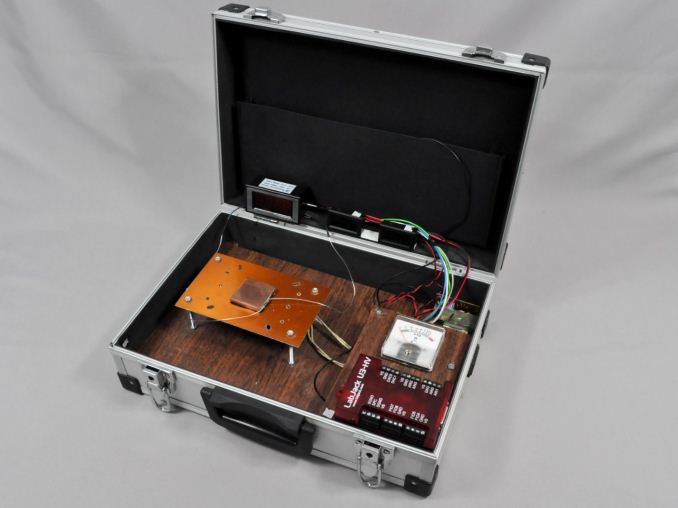
Appropriate thermal testing requires the creation of a proper testing station and the use of laboratory-grade equipment. Therefore, we created a thermal testing platform with a fully controllable thermal energy source that may be used to test any kind of cooler, regardless of its design and or compatibility. The thermal cartridge inside the core of our testing station can have its power adjusted between 60 W and 340 W, in 2 W increments (and it never throttles). Furthermore, monitoring and logging of the testing process via software minimizes the possibility of human errors during testing. A multifunction data acquisition module (DAQ) is responsible for the automatic or the manual control of the testing equipment, the acquisition of the ambient and the in-core temperatures via PT100 sensors, the logging of the test results and the mathematical extraction of performance figures.
Finally, as noise measurements are a bit tricky, their measurement is being performed manually. Fans can have significant variations in speed from their rated values, thus their actual speed during the thermal testing is being recorded via a laser tachometer. The fans (and pumps, when applicable) are being powered via an adjustable, fanless desktop DC power supply and noise measurements are being taken 1 meter away from the cooler, in a straight line ahead from its fan engine. At this point we should also note that the Decibel scale is logarithmic, which means that roughly every 3 dB(A) the sound pressure doubles. Therefore, the difference of sound pressure between 30 dB(A) and 60 dB(A) is not “twice as much” but nearly a thousand times greater. The table below should help you cross-reference our test results with real-life situations.
The noise floor of our recording equipment is 30.2-30.4 dB(A), which represents a medium-sized room without any active noise sources. All of our acoustic testing takes place during night hours, minimizing the possibility of external disruptions.
| <35dB(A) | Virtually inaudible |
| 35-38dB(A) | Very quiet (whisper-slight humming) |
| 38-40dB(A) | Quiet (relatively comfortable – humming) |
| 40-44dB(A) | Normal (humming noise, above comfortable for a large % of users) |
| 44-47dB(A)* | Loud* (strong aerodynamic noise) |
| 47-50dB(A) | Very loud (strong whining noise) |
| 50-54dB(A) | Extremely loud (painfully distracting for the vast majority of users) |
| >54dB(A) | Intolerable for home/office use, special applications only. |
*noise levels above this are not suggested for daily use
To begin with, we are having a look at the Endorfy Fortis 5 Dual Fan with its fans running at their maximum speed.
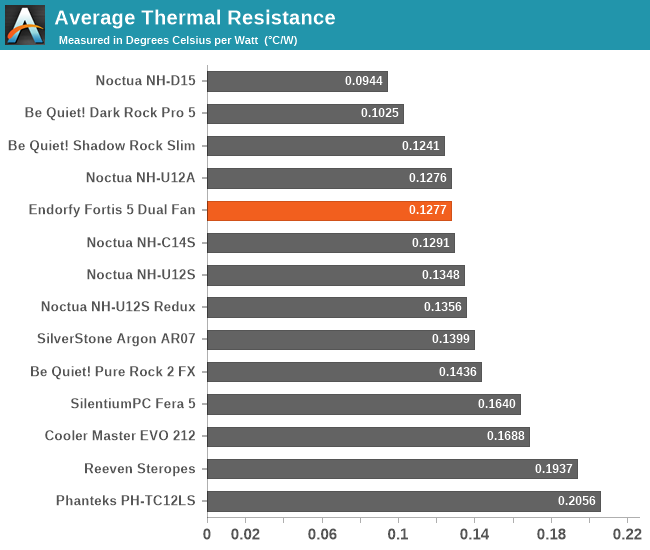
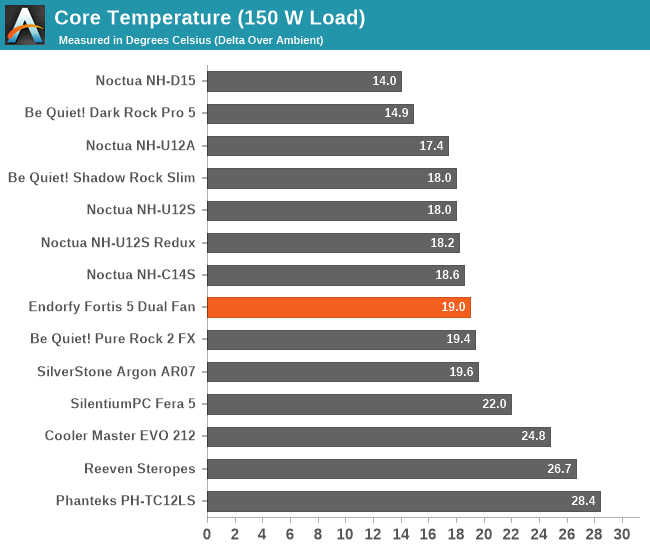
| Core Temperature, Constant Thermal Load (Max Fan Speed) |
The Endorfy Fortis 5 Dual Fan demonstrates solid thermal performance with an average thermal resistance of 0.1277 °C/W when its fans are running at maximum speed (1400 RPM). What is of particular importance here is that the thermal resistance hardly varies depending on the load, even when the load is extreme, suggesting that the cooler has a very efficient heat transfer design. It falls behind dual tower coolers mainly because its heat transfer area is significantly smaller, and it is also important to consider that the Fortis 5 operates with slightly slower fans that strive for a balance between performance and noise.
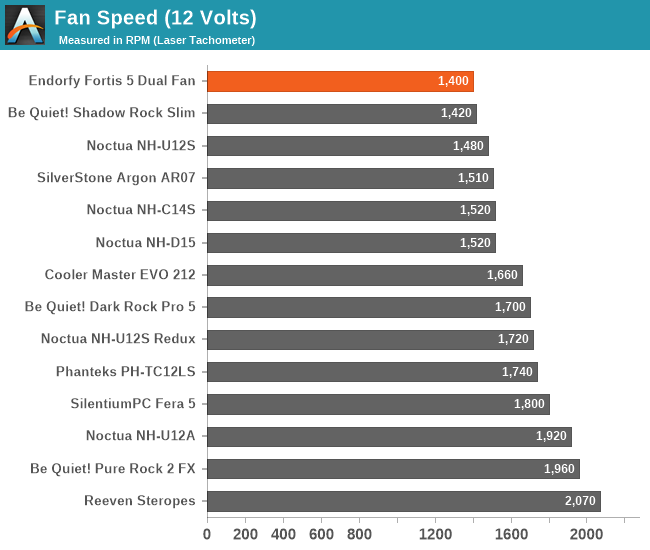
The Fluctus fans are specifically engineered to maintain low noise levels even during peak operation, or at least that is what the company claims. At full speed, the Fortis 5 generates a noise level of 37.7 dB(A), a figure lower than some other models reach with just one fan. While it definitely is not entirely silent, this noise level is impressively low for a dual-fan cooler.
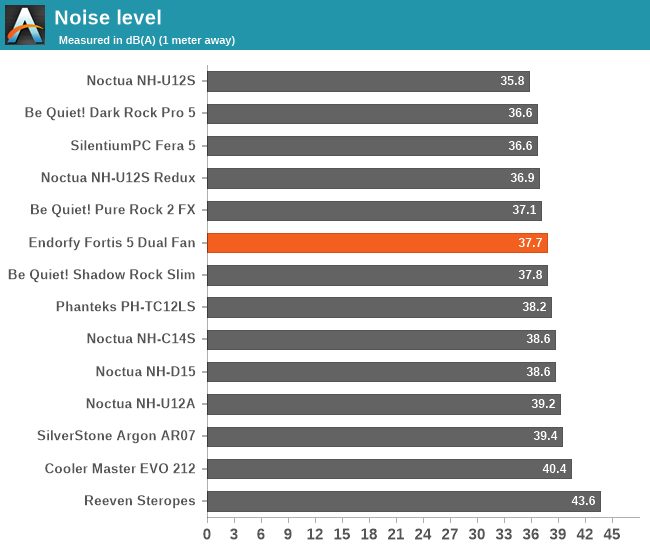
In this test we are switching things up a bit, taking a look at the cooler’s performance with the Fluctus fans taken down to half speed.
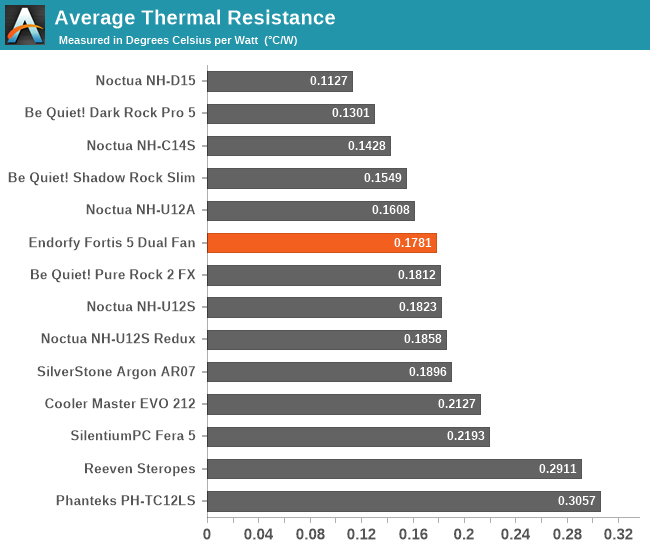
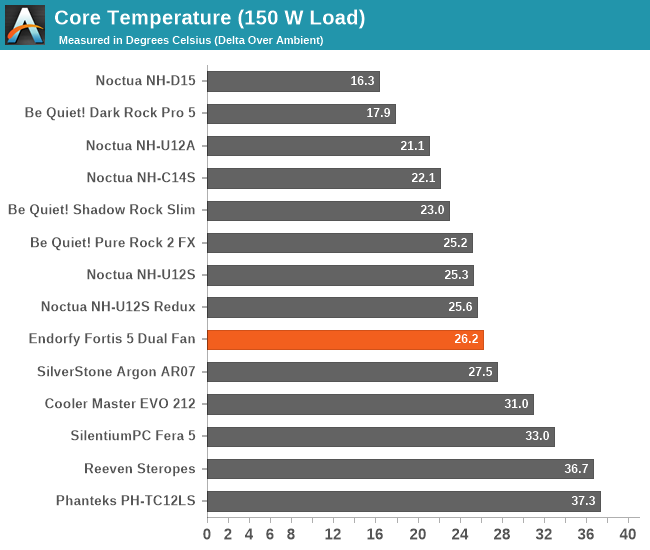
| Core Temperature, Constant Thermal Load (Low Fan Speed) |
When the fans speed of the Endorfy Fortis 5 is reduced to about 700 RPM, a decrease in thermal performance is observed, as expected. The average thermal resistance at this lower speed rises to 0.1781 °C/W. The performance loss is notable but the Fortis 5 Dual Fan still performs very well, placing it ahead of many competitive products.
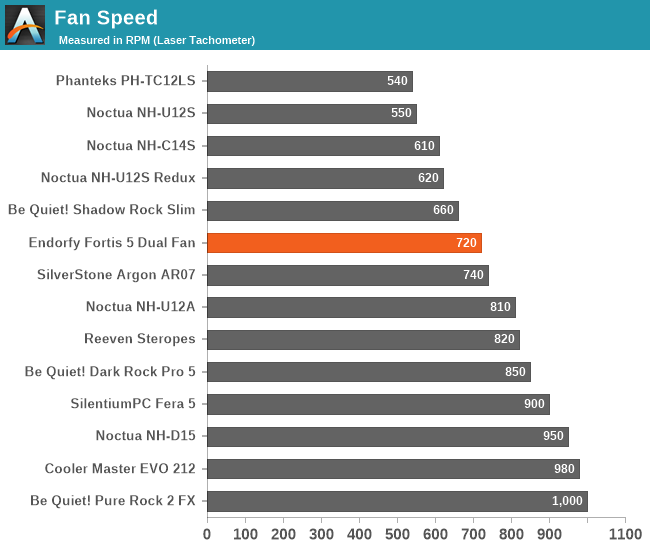
Lowering the speed of the Fluctus PWM fans to half results in a significant reduction in noise output, bringing it down to 32 dB(A). At this level, the cooler becomes practically inaudible, even with the observer almost next to the cooler itself. In most realistic scenarios, it would be difficult to distinguish the noise generated by the Fortis 5, even in a silent room, while the cooler is still capable of handling very powerful thermal loads.
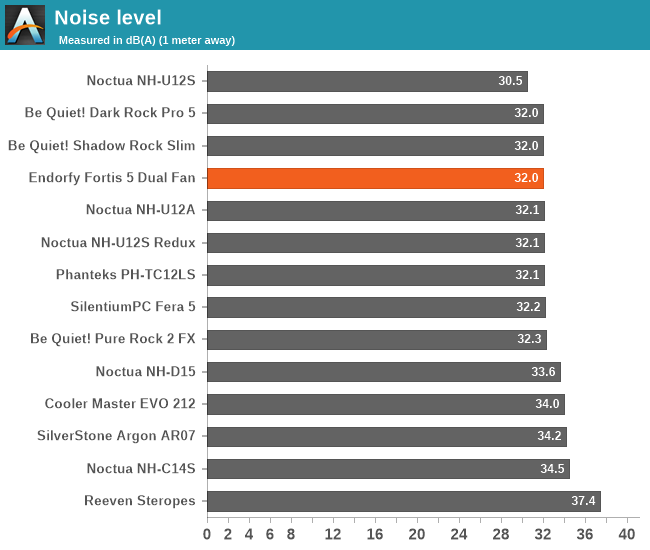
During our thermal resistance vs. sound pressure level test, we maintain a steady 100W thermal load and assess the overall performance of the coolers by taking multiple temperature and sound pressure level readings within the operating range of the stock cooling fans. The result is a graph that depicts the absolute thermal resistance of the cooler in comparison to the noise generated. For both the sound pressure level and absolute thermal resistance readings, lower figures are better.
This chart helps us realize where the Fortis 5 Dual Fan stands against its direct competition and, truth is, the Endorfy cooler is doing significantly better than we expected it to. Due to its very low noise output, the Fortis 5 Dual fan can handle low-to-medium loads very well, much better than its smaller sibling (Fera 5) and as well as significantly more expensive options. When the fan speed goes up, the Fortis 5 Dual Fan even gives the NH-U12A a run for its money. Overall, the Fortis 5 does very well for a mainstream-level cooler of reasonable weight and cost.
Endorfy, formerly known as SilentiumPC, has made a name for itself by delivering high-performance cooling solutions that strike a balance between efficiency and affordability. The Fortis 5 Dual Fan, the company’s largest single-tower cooler, arrives in straightforward packaging with essential information and hardware included, including a syringe of Pactum PT-3 thermal paste that we used to test this cooler with. However, the packaging and presentation could benefit from less marketing jargon, as the product itself has enough merit without the need for heavy promotional language.
The Fortis 5 Dual Fan is built around a robust single-tower design, standing 159 mm tall, which ensures compatibility with a wide range of PC cases. Weighing around 800 grams, it is engineered to provide effective cooling without exerting excessive stress on the motherboard. The cooler features a relatively simple setup of six copper heat pipes that efficiently transfer heat directly from the CPU to the sizeable aluminum fin array. The dual-fan setup features Endorfy’s Fluctus PWM fans, one 140 mm and one 120 mm, which are engineered to balance performance with noise. The overall construction feels robust, with high build quality evident in the materials used, although the absence of RGB lighting might deter those looking for more flashy aesthetics.
In terms of performance, the Fortis 5 Dual Fan holds its ground well. It delivers solid thermal performance, with an average thermal resistance of 0.1277 °C/W at maximum fan speed. The cooler manages to achieve this while keeping noise levels relatively low, generating only 37.7 dB(A) at full speed. When the fan speed is reduced to half, the thermal resistance rises to 0.1781 °C/W but the noise levels drop to 32 dB(A), making the cooler virtually silent in most environments. Although it may not outperform more expensive dual-tower coolers, the Fortis 5 delivers a commendable balance of performance and acoustic efficiency.
In summary, the Endorfy Fortis 5 Dual Fan stands out as a well-rounded cooling solution that offers solid performance, high build quality, and low noise levels at a competitive price point. Retailing at $49, and often available for slightly less, it provides excellent value for users looking for a reliable cooler that does not break the bank. While it might not match the raw cooling power of larger, more expensive coolers, its design and performance make it a compelling choice for users looking for a reliable, budget-friendly solution without compromising on quality.
